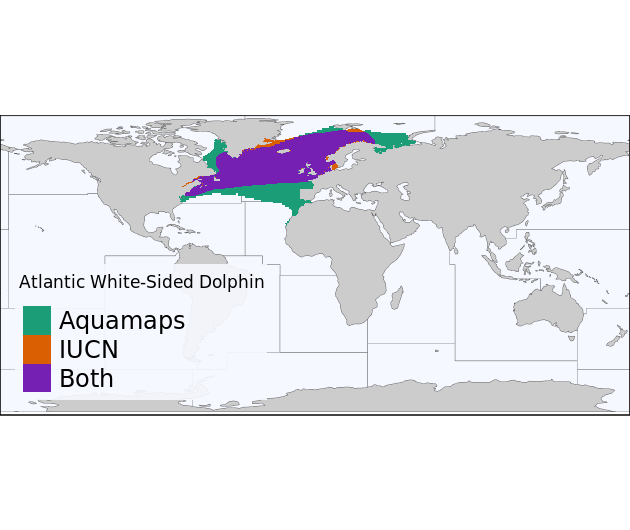Researchers analyze data about the global distribution of sea animals and develop a Web app

An international research team has compared global distribution maps of marine species and has developed recommendations for how to further improve the two extensive databases providing publicly available delineations of marine species occurrence. Information about species' occurrences is the crucial basis for ecological studies as well as for policy decisions required to ensure the survival of endangered species. The researchers also developed a Web app that people can use to overlay the maps from both databases in order to compare them – around 250 species have been recorded in the app. University of Freiburg biologist Dr. Kristin Kaschner was involved in the work that the team published in the scientific journal PLOS ONE.
Currently, research and policy predominantly rely on two sources for the large scale distribution of marine species: the International Union for Conservation of Nature (IUCN) creates the maps based on experts' knowledge for the individual species while AquaMaps, a tool and online marine atlas developed by Kaschner, generates occurrence maps fusing a predictive modelling approach. Together the databases include 24,586 species: 22,889 are in AquaMaps and 4,027 are in IUCN, with an intersection of only 2,330 species included in both.
Due to the varying methodologies, the delineation of a specific species' distribution can differ greatly. For many of the well-studied species, the maps produced by both databases aligned very well. But for others, however, there are irregularities: in the IUCN maps, for instance, the presence of coral in deep waters is overestimated. Some of the computer-generated AquaMaps maps, on the other hand, of which only 5.7 percent have been checked by experts, show breaks on the edges of the prognosticated distribution areas, indicating a possible need for improving the algorithm.
"With our results we want to offer an impulse to deepen the cooperation between species experts and species distribution modelers," says Kaschner. "The goal is to offer scientists, policy-makers and representatives in civil society the best possible basis for decision-making when it comes to protecting endangered species and biodiversity in our planet's oceans."
More information: Casey C. O'Hara et al. Aligning marine species range data to better serve science and conservation, PLOS ONE (2017). DOI: 10.1371/journal.pone.0175739
Journal information: PLoS ONE
Provided by Albert Ludwigs University of Freiburg





















